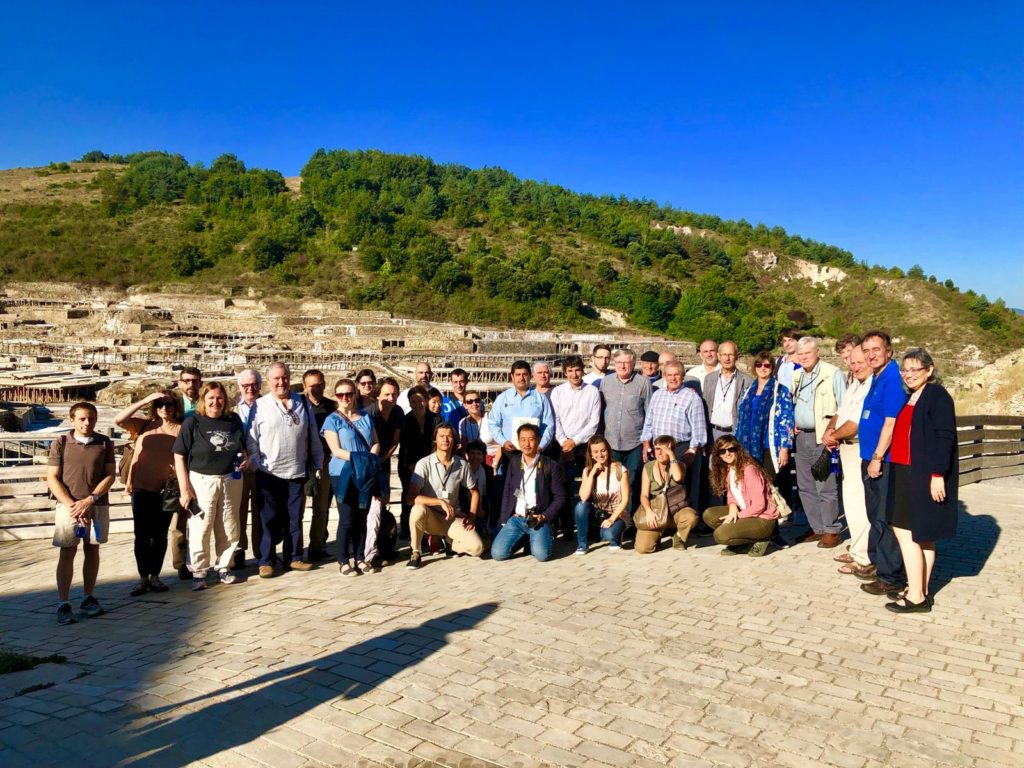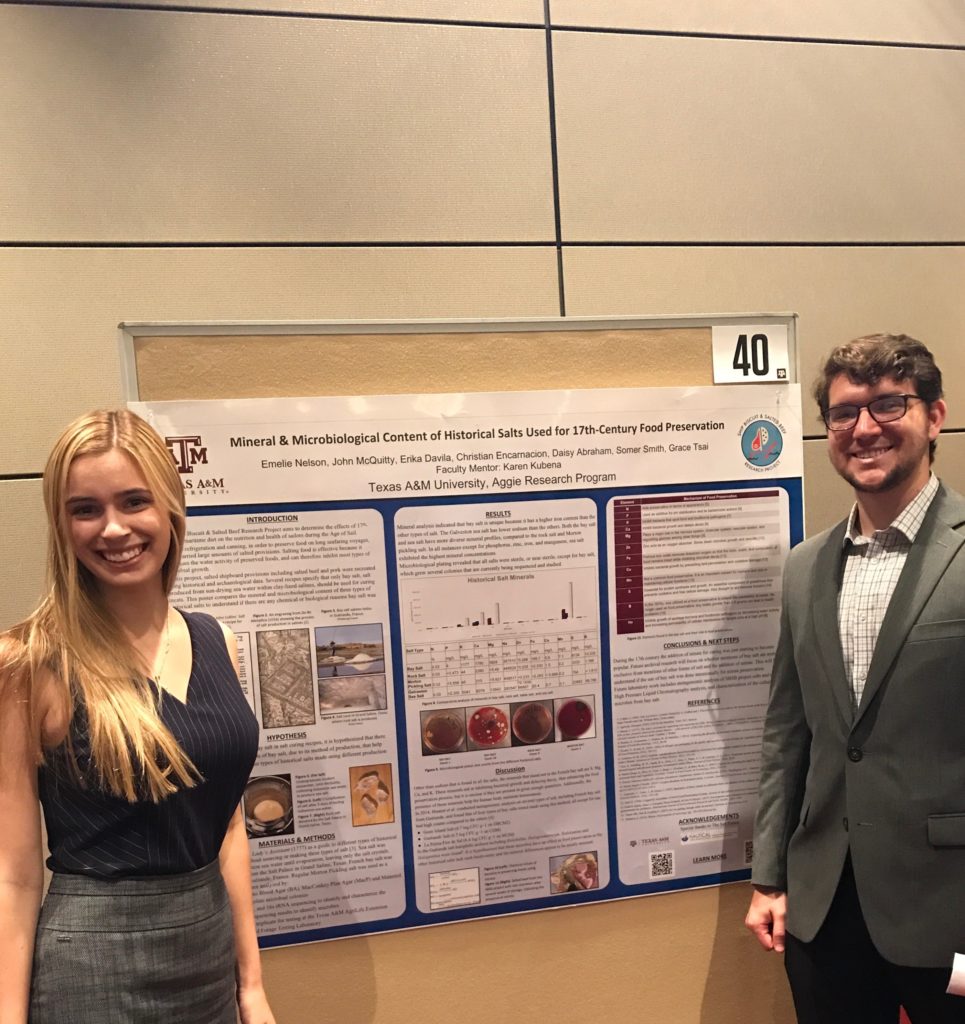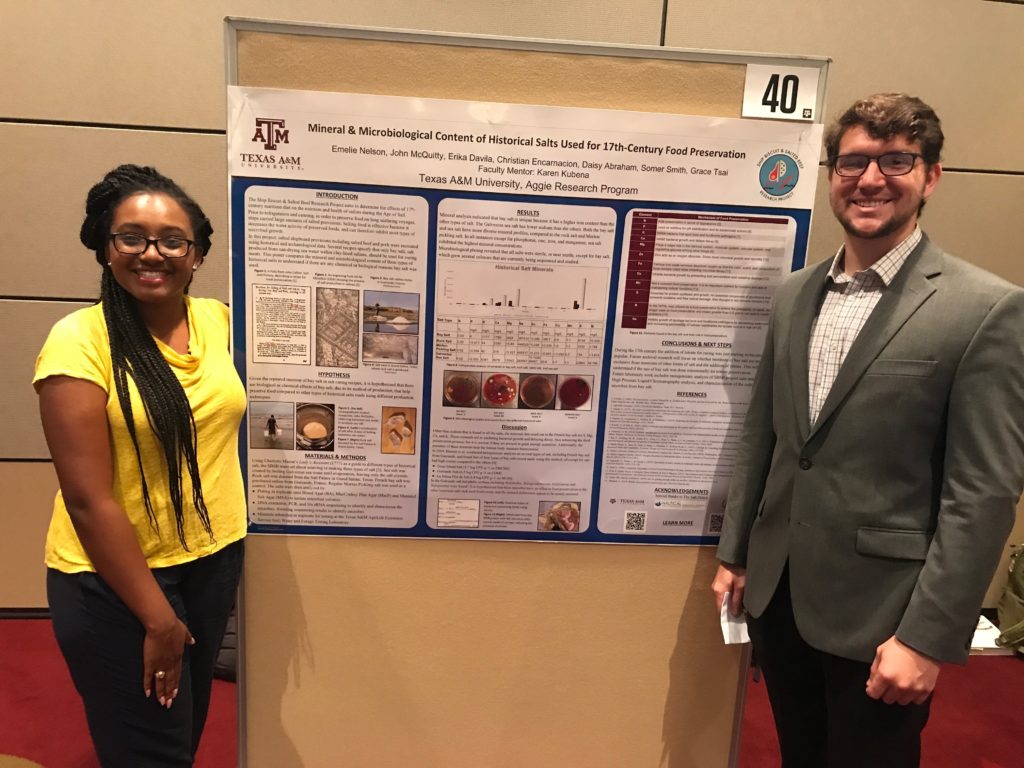This semester was incredibly productive with regard to lab work and presentation of our work.
Thanks to Drs. Steve and Susanne Talcott, we were able to run kjeldahl, TBARS, and soxhlet assays in triplicate. As noted in previous posts, we were also able to confirm that no vitamin C was present. Most recently, we purchased nitrate strips thanks to funding from our sponsors (thank you!) to understand if there was an increase in nitrate as we suspected previously, which we will present in a later post. Thanks to Dr. Chris Kerth, Kayley Wall, and Dr. Andrew Hillhouse, the GCMS and metagenomics data are also collected and in the process of being analyzed. Further, we completed isolation of 294 pure culture specimens and have approximately 30 ready for 16s sequencing thanks to Dr. Robin Anderson.
With regards to presentation of our work, Grace Tsai, our PI, presented different aspects of our research at the European Association of Archaeologists (EAA) annual conference in Barcelona, then traveled to the III International Congress on the Anthropology of Salt in the Basque Country. At the EAA, Grace presented a paper titled “Experimental Archaeology in Enological Palynology” that covered surprising results from pollen counts within the wine we produced for the project compared to the pollen counts in the vineyard sediment collected shortly after we gathered the grapes. At the Congress on Salt, Grace presented a paper titled “Characteristics of bay salt and its effects in historical food preservation” that provided preliminary evidence linking microbes found in the bay salt used in the experiment to nitrate-producing and denitrifying microbes. Both papers were well-received and we received helpful feedback on our research.
Back home in College Station, the undergraduate students presented at the LAUNCH Undergraduate Research Expo. Their experiences were summarized by Christian Encarnacion in his post below:
These past few weeks have been very busy and productive for the entire team! We were able to present an awesome poster at the Undergraduate Research Expo on October 3rd. Titled, “Mineral and Microbiological Content of Historical Salts Used for 17th Century Food Preservation”, our poster looked at how French bay salt differed in terms of mineral and microbial content compared to other salt sources. Some of our wonderful team members were able to discuss with judges and other students about our unique research and what we hope to discover along the way.
One of our team members, Erika Davila, found the experience to be “really nice and every person that I talked to was very interested in becoming part of the group”.
Many people who wanted to learn more about our poster were definitely intrigued on why this research was relevant. The team explained that not only do we gain better historical insight on 17th century food preservation, we also learn more about why French bay salt was such a popular ingredient in food preservation. Historical literature frequently specified the use of French bay salt, and even though people lacked the scientific knowledge about French bay salt they definitely knew it was effective at preserving food for quite a long time!
In our research, we were able to conclude that French bay salt contained a diverse mineral and microbial count. While these minerals provided some nutrition for sailors, minerals like iron and zinc help prevent microbial growth and rancidity by absorbing oxygen and preventing oxidative damage. Additionally many of the microbes present in the salt were nitrogen-fixing bacteria, meaning they can produce nitrate, a very important compound that is used presently as a food preservative!
With the end of the Undergraduate Research Expo, our team will go back into the lab to continue collecting data on our food preservation samples. Currently, we are planning on starting metagenomic analysis of our SBSB project salts and meats. We are super excited to see what other things we will discover and are looking forward to sharing this with everyone in the near future!
-Christian
As the semester ends, many of our students are also graduating! We will miss them, but are glad to see them move on to greater things. Emelie Nelson and Christian Encarnacion will both be attending medical school, while John McQuitty will be going to dental school.
Thankfully, this semester we also added one new member, Daisy Abraham!
Daisy Abraham
Major: Public Health
Interests: Running, hiking, reading, painting
Daisy was born in an Indian-American family and raised along the border of Mexico in the Rio Grande Valley. A “third culture kid”, she has grown to appreciate traveling and immersing herself in different cultures. She graduated as salutatorian from her high school and is currently pursuing a future in medicine. In her free time you may find her in one of the local coffee shops.
We wish everyone a great holiday season, and will be back next semester to present results!






